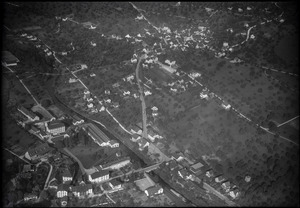Füllinsdorf facts for kids
Quick facts for kids
Füllinsdorf
|
||
|---|---|---|
|
||
| Country | Switzerland | |
| Canton | Basel-Landschaft | |
| District | Liestal | |
| Area | ||
| • Total | 4.62 km2 (1.78 sq mi) | |
| Elevation | 340 m (1,120 ft) | |
| Population
(Jun 2021 )
|
||
| • Total | 4,653 | |
| • Density | 1,007.1/km2 (2,608.5/sq mi) | |
| Postal code |
4414
|
|
| Surrounded by | Arisdorf, Augst, Frenkendorf, Giebenach, Liestal, Pratteln | |
Füllinsdorf is a town, also called a municipality, in Switzerland. It is located in the Liestal district. This district is part of the canton of Basel-Country.
Contents
History of Füllinsdorf
Füllinsdorf was first mentioned a very long time ago. Its name appeared in old records in the year 825. Back then, it was called Firinisvilla. Later, around 1225-1226, it was known as Vilistorf.
Geography and Landscape
Füllinsdorf covers an area of about 4.61 square kilometers (1.78 sq mi). A big part of this land is used for farming. About 37% of the area is farmland. Forests cover another large part, around 32%.
The town itself, with its buildings and roads, takes up about 30% of the land. A very small part, less than 1%, is made up of rivers. The old village of Füllinsdorf was built on a hillside. This hillside is above the Ergolz river valley. In the 1600s and 1700s, a new industrial area grew. It was called Niederschönthal and was built along the Ergolz river.
Füllinsdorf's Coat of Arms
Every town has a special symbol called a coat of arms. Füllinsdorf's coat of arms shows a silver horse. The horse is standing on its back legs. It has a golden tongue and golden hooves. The background color of the shield is blue.
Population and People
Füllinsdorf has a population of about 4,653 people. About 23% of the people living here are from other countries. Most people in Füllinsdorf speak German. This is about 85% of the population. Other languages spoken include Italian language and Turkish language.
Age Groups in Füllinsdorf
The population of Füllinsdorf includes people of all ages.
- About 6.5% are young children (0-6 years old).
- Around 11.7% are teenagers (7-19 years old).
- Adults between 20 and 64 years old make up a large part of the population.
- About 16.3% are seniors (65-79 years old).
- Another 5.7% are over 80 years old.
Historical Population Growth
The number of people living in Füllinsdorf has changed over time. This chart shows how the population has grown:

Economy and Jobs
Füllinsdorf has a low unemployment rate, which means most people who want to work can find jobs. The town has many different types of jobs. These jobs are grouped into three main sectors:
- Primary Sector: This includes jobs like farming.
- Secondary Sector: This involves manufacturing (making things in factories) and construction (building things).
- Tertiary Sector: This is the largest sector. It includes jobs in sales, transportation, hotels, restaurants, and healthcare. Many people also work as technical experts or scientists.
Many people who live in Füllinsdorf travel to other towns for work. Also, many people from other places come to Füllinsdorf to work. About 23% of workers use public transportation. Almost half of the workers (49%) use a private car to get to work.
Religion in Füllinsdorf
People in Füllinsdorf follow different religions.
- About 44% of the population belongs to the Swiss Reformed Church.
- Around 25% are Roman Catholic.
- Other religions include Orthodox Christian, Islamic, Buddhist, and Hindu.
- About 12.5% of the people do not belong to any church.
Education and Schools
Many adults in Füllinsdorf have completed higher education. About 40% have finished upper secondary education. This is like high school. Another 15% have gone on to university or a specialized college.
Some students who live in Füllinsdorf go to schools in other towns. Also, a few students from other towns come to Füllinsdorf for school.
See also
 In Spanish: Füllinsdorf para niños
In Spanish: Füllinsdorf para niños





